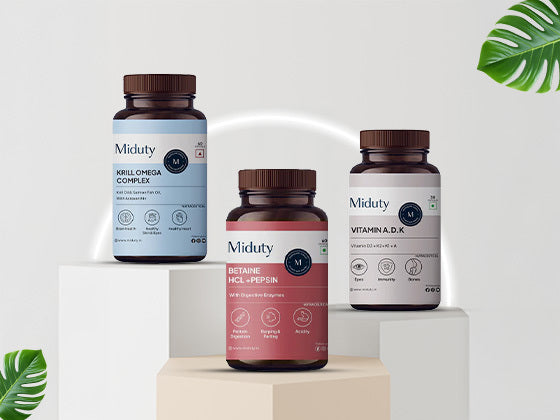Hyaluronic acid (HA) serum has grown in popularity in the skincare industry due to its capacity to revitalize the under-eye area while also providing several advantages. Eight compelling reasons to consider using hyaluronic acid serum for your under-eye skincare routine include intense hydration, reduced fine lines and wrinkles, reduced puffiness, improved skin elasticity, gentleness on sensitive skin, improved skin texture, a brightened complexion, and ease of incorporation. To achieve the best effects, pick a high-quality HA serum and apply it consistently. Furthermore, a thorough skincare regimen that includes correct sun protection, a nutritious diet, and adequate hydration can improve the overall health and appearance of your skin. If you have any specific skin concerns or conditions, it's always a good idea to consult with a dermatologist or skincare professional before introducing new products into your routine.
Hydration and Moisture Enhancement
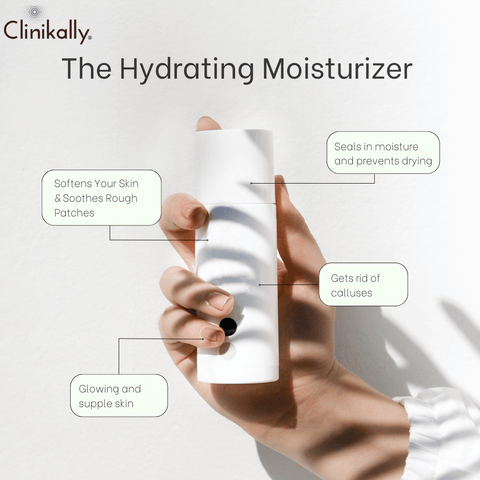
Hydration and moisture enhancement are important aspects of skincare that contribute to healthy, radiant, and youthful-looking skin. While the terms "hydration" and "moisture" are sometimes used interchangeably in the context of skincare, they refer to distinct concepts:
-
Hydration: The water content of the skin is referred to as hydration. It is the process of infusing and retaining water within the cells and tissues of the skin. Hydration is necessary for the skin's natural barrier function, protection against external aggressors, and optimal skin function. Skin that is well-hydrated appears plump, smooth, and supple.
-
Moisture: Moisture refers to the presence of oils or lipids on the skin's surface that help to seal in water and prevent it from evaporating. These natural oils form a protective barrier that seals in moisture, keeping skin soft and smooth and preventing dryness.
The combination of proper hydration and effective moisture retention is critical for balanced and healthy skin. Dry or dehydrated skin appears dull and rough, and it is more prone to fine lines and other aging signs. Skin that is well-hydrated and moisturized, on the other hand, appears plump, smooth, and radiant. It is important to remember that different skin types have different hydration and moisture requirements. Some people naturally have more oily skin, while others may have drier skin. Finding the right balance of hydrating and moisturizing products for your specific skin type and concerns is key to achieving optimal skin health.
Unlocking the Power of Hyaluronic Acid for Intense Hydration
Anyone looking to boost the moisture levels and general appearance of their skin would be wise to harness the power of hyaluronic acid for intensive hydration. Choose the right hyaluronic acid product, apply it to damp skin, layering technique, use it twice a day, combine it with other hydrating ingredients, stay hydrated internally, be patient and consistent, use sun protection, and adjust based on climate and skin needs to achieve intense hydration. If you have specific skin concerns or conditions, it's always a good idea to check with a dermatologist or skincare professional to build a customized skincare program.
Addressing Dryness and Dullness in the Under-Eye Area
Dryness and dullness in the under-eye area are common, especially because the skin in this area is thinner and more delicate than the rest of the face. Fortunately, there are several effective strategies for addressing these concerns and revitalizing the under-eye area:
-
Hydrate with Hyaluronic Acid: As previously stated, hyaluronic acid is an excellent ingredient for intense hydration. Applying a hyaluronic acid serum or eye cream to the under-eye area can aid in the attraction and retention of moisture, plumping up the skin and reducing dryness.
-
Use a Gentle Cleanser: Use a gentle, sulfate-free cleanser when cleansing your face. Harsh cleansers can deplete the skin's natural oils, causing dryness and irritation around the eyes. Pat your skin dry instead of rubbing it to avoid unnecessary friction.
-
Apply an Eye Cream: Look for an eye cream that is designed specifically for the under-eye area. Hyaluronic acid, ceramides, peptides, and antioxidants are common ingredients in eye creams that can help moisturize and brighten the skin while reducing the appearance of fine lines.
-
Wear sunscreen: It is critical to protect the under-eye area from harmful UV rays. Apply a broad-spectrum sunscreen with at least SPF 30 every day, even on cloudy days, to prevent further damage and maintain skin health.
-
Get Enough Sleep: Sleep deprivation can aggravate under-eye dryness and dullness. Aim for 7-9 hours of quality sleep per night to allow your skin to regenerate and repair itself.
-
Use Cold Compresses: For a few minutes, gently apply a cold compress or chilled tea bags to the under-eye area to reduce puffiness and soothe dry skin. The cool temperature can help constrict blood vessels and improve the appearance of puffiness temporarily.
-
Stay Hydrated and Eat a Balanced Diet: Drinking plenty of water and eating a nutritious diet rich in vitamins and minerals both contribute to good skin health. Foods with antioxidants, such as fruits and vegetables, can help fight free radicals and improve skin radiance.
-
Consider Retinol or Retinoid Products: Retinol or retinoid-based eye creams can help improve the texture of the skin and stimulate collagen production, which can address fine lines, wrinkles, and dullness.
-
Get Enough Rest: Adequate rest and relaxation are essential for skin health. Reducing stress and practicing relaxation techniques can contribute to a more vibrant complexion.
-
Avoid Rubbing or Pulling: Be gentle with your under-eye area, as excessive rubbing or pulling can cause irritation and worsen dryness and dullness.
The Science Behind Hyaluronic Acid's Moisture-Retaining Abilities
The moisture-retaining properties of hyaluronic acid are based on its unique molecular structure and interactions with water molecules. Understanding the science behind hyaluronic acid can help explain why it is such an excellent hydrating ingredient in skincare products. The science behind hyaluronic acid includes molecular structure, humectant capabilities, water absorption, skin barrier support, skin compatibility, and aging and hydration. It's vital to remember that the efficacy of hyaluronic acid in skincare products is determined by a variety of factors, including its molecular weight and formulation. Different molecular weights of hyaluronic acid can permeate the skin to varying degrees, with lower molecular weight hyaluronic acid potentially reaching deeper layers.
Diminishing Fine Lines and Wrinkles
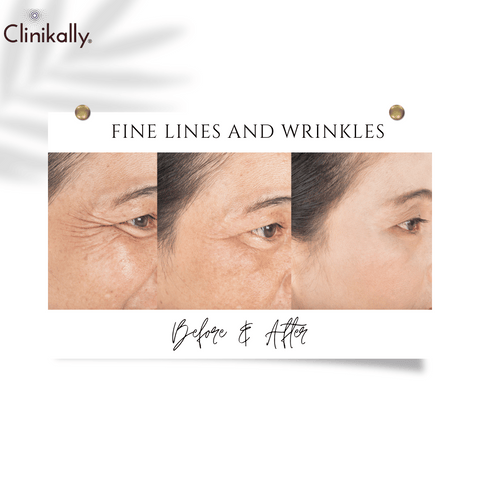
Many people who want to keep a more youthful and smoother complexion have a skincare aim of reducing fine lines and wrinkles. While it is impossible to entirely eliminate wrinkles, there are numerous ways and products that can help decrease their appearance and prevent their development. Here are some effective strategies:
-
Retinoids: Retinoids, which are derived from vitamin A, are regarded as one of the most effective ingredients for treating fine lines and wrinkles. They stimulate collagen production, increase skin cell turnover, and improve skin texture. Retinol, a milder form of retinoid that is available without a prescription, can also be effective. Begin with a lower concentration to allow your skin to gradually build tolerance.
-
Antioxidants: Antioxidants such as vitamin C, vitamin E, and coenzyme Q10 help protect the skin from free radical damage caused by UV radiation and pollutants in the environment. By neutralizing free radicals, antioxidants can support collagen production and prevent premature aging.
-
Sun Protection: Sunscreen is essential for preventing and reducing wrinkles. Prolonged sun exposure leads to collagen breakdown and accelerates skin aging. Use a broad-spectrum sunscreen with at least SPF 30 daily, and limit sun exposure, especially during peak hours.
-
Hydration: Keeping the skin well-hydrated is crucial for maintaining its elasticity and reducing the appearance of fine lines. Use hyaluronic acid or other humectants to attract and retain moisture in the skin.
-
Peptides: Peptides are amino acid chains that signal the skin to produce more collagen, helping to improve skin firmness and reduce the appearance of wrinkles.
-
Exfoliation: Regular but gentle exfoliation can promote cell turnover and improve the skin's texture. Use chemical exfoliants like alpha hydroxy acids (AHAs) or beta hydroxy acids (BHAs) to remove dead skin cells and stimulate collagen production.
-
Avoid Smoking and Limit Alcohol Intake: Smoking and excessive alcohol consumption can accelerate skin aging and contribute to the formation of wrinkles. Quitting smoking and moderating alcohol intake can have positive effects on the skin's overall health.
-
Proper Skincare Routine: Develop a comprehensive skincare routine tailored to your skin type and concerns. Consistently cleanse, moisturize, and protect your skin, and avoid using products that may cause irritation.
-
Facial Massage: Gentle facial massages can improve blood circulation, aid in lymphatic drainage, and promote a more relaxed appearance. Be careful not to tug or pull on the skin too harshly.
-
Consider Professional Treatments: If fine lines and wrinkles are a significant concern, you may consider professional treatments like chemical peels, microdermabrasion, dermal fillers, or laser therapy. Consult with a dermatologist or licenced skincare professional to determine the most suitable option for you.
Smoothing and Plumping Effect for Youthful-Looking Skin
Smooth and plump skin is essential for generating youthful-looking skin. Several effective tactics and skincare products that can help you reach this aim include hyaluronic acid, collagen-boosting products, antioxidants, moisturizing regularly, exfoliation, facial massage, sun protection, a balanced diet, hydration, and considering professional treatments. Remember that obtaining and keeping youthful-looking skin takes time. For visible and long-lasting benefits, your skincare routine and lifestyle decisions must be consistent. If you have specific skin concerns or conditions, consulting with a skincare professional will assist you in developing a personalized strategy tailored to your specific requirements.
How Hyaluronic Acid Helps Reduce the Appearance of Fine Lines
Because of its unique hydrating and plumping properties, hyaluronic acid plays an important role in reducing the appearance of fine lines. Here's how hyaluronic acid works to reduce the visibility of fine lines:
-
Intense Hydration: Hyaluronic acid is a humectant, which means it attracts and retains water molecules. When hyaluronic acid is applied to the skin, it draws moisture from the surrounding environment and deeper layers of the skin, increasing the water content in the skin cells. This intense hydration plumps up the skin, making fine lines and wrinkles less visible.
-
Improved Skin Elasticity: Because hyaluronic acid hydrates the skin, it improves its elasticity and flexibility. Skin that is well-hydrated and elastic is less likely to show fine lines and creases, resulting in a smoother overall appearance.
-
Enhanced Skin Barrier: Hyaluronic acid supports the skin's natural barrier function, which helps to prevent water loss and maintain optimal hydration levels. A strong skin barrier can protect the skin from external aggressors that cause premature aging, reducing the formation of fine lines.
-
Collagen Production: Hyaluronic acid can stimulate collagen production in the skin. Collagen is a protein that gives the skin structural support and firmness. As we age, collagen production decreases, leading to the formation of fine lines and wrinkles. By promoting collagen synthesis, hyaluronic acid helps to improve the skin's texture and reduce the visibility of fine lines.
-
Skin Smoothing Effect: When applied topically, hyaluronic acid can fill in the gaps between skin cells, creating a smoother surface. This smoothing effect can help minimize the appearance of fine lines and make the skin look more even and refined.
-
Compatibility with Most Skin Types: Hyaluronic acid is well-tolerated by various skin types, including sensitive skin. It is suitable for daily use because of its lightweight and non-greasy texture because it will not irritate skin or clog pores.
Restoring Elasticity and Firmness to the Under-Eye Area
Restoring elasticity and firmness to the under-eye area is a common concern, as this delicate skin shows signs of aging more quickly, such as fine lines and loss of firmness. Here are some effective methods for increasing the elasticity and firmness of the under-eye area:
-
Use Hyaluronic Acid: As previously stated, hyaluronic acid is a powerful hydrating ingredient that can help plump up the skin and improve its elasticity. Look for an eye cream or serum containing hyaluronic acid to keep the under-eye area hydrated and supple.
-
Apply Retinoids or Retinol: Topical retinoids or retinol products sold over the counter can stimulate collagen production and increase skin cell turnover. Regular use of these ingredients can help improve skin texture, reduce fine lines, and increase the firmness of the under-eye area.
-
Peptide-Infused Products: Peptides are amino acid chains that can help signal the skin to produce more collagen and elastin, both of which are important for maintaining skin elasticity and firmness. Look for eye creams or serums that contain peptides to help with under-eye skin health.
-
Be Gentle with Application: The skin around the eyes is delicate and easily prone to damage. Use a gentle tapping motion with your ring finger to apply skincare or makeup to avoid needless tugging or pulling.
-
Consider Products Containing Caffeine: The under-eye area can appear firmer and puffiness can be temporarily reduced thanks to caffeine's vasoconstrictive effects. Look for caffeine-containing eye creams or serums to help reduce the appearance of tired eyes.
-
Get Enough Sleep: Sleep deprivation can cause puffiness and make the under-eye area appear less firm. Aim for 7-9 hours of quality sleep per night to allow your skin to regenerate and repair.
-
Wear Sunglasses and Sunscreen: Shield the under-eye area from harmful UV rays by wearing sunglasses and applying broad-spectrum sunscreen with an SPF of at least 30 every day. UV rays can cause collagen breakdown and exacerbate aging symptoms.
-
Facial Massage: Gentle facial massages can improve blood circulation and lymphatic drainage, resulting in a healthier and more vibrant appearance.
-
Consider Professional Treatments: For more dramatic results, you may want to look into professional treatments like laser therapy, chemical peels, or microneedling designed specifically for the under-eye area. Consult a dermatologist or skincare expert to determine the best options for your specific needs.
Minimizing Dark Circles and Puffiness
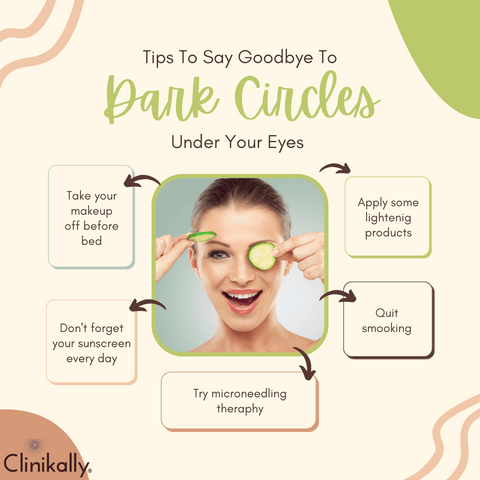
Dark circles and puffiness around the eyes can be reduced with a combination of skincare practices and lifestyle changes. Here are some effective strategies for dealing with these issues:
-
Get Sufficient Sleep: Lack of sleep can exacerbate the appearance of dark circles and puffiness. Aim for 7-9 hours of quality sleep each night to allow your skin to repair and rejuvenate.
-
Elevate Your Head While Sleeping: Elevating your head slightly while sleeping can help reduce fluid retention and prevent the accumulation of fluid under the eyes, which can contribute to puffiness.
-
Use a Cold Compress: Applying a cold compress or chilled cucumber slices to the under-eye area can help constrict blood vessels and temporarily reduce puffiness.
-
Hydration: Drink plenty of water throughout the day to stay hydrated, which can help prevent water retention and promote healthier-looking skin.
-
Limit Salt Intake: Consuming excessive salt can lead to water retention and worsen puffiness. Try to reduce your salt intake and opt for a diet rich in fruits and vegetables.
-
Avoid Rubbing Your Eyes: Rubbing the delicate skin around the eyes can lead to inflammation and exacerbate puffiness. Be gentle when applying skincare products or removing makeup in this area.
-
Use Eye Creams with Caffeine: Eye creams containing caffeine can temporarily constrict blood vessels and reduce puffiness. Look for products specifically designed for the under-eye area that contain this ingredient.
-
Apply Topical Vitamin C: Vitamin C can help brighten the skin and reduce the appearance of dark circles. Look for eye creams or serums with stabilized vitamin C to target this concern.
-
Sun Protection: Wear sunglasses and apply sunscreen with an SPF of at least 30 every day to protect the under-eye area from sun exposure. UV rays can contribute to skin darkening and make dark circles appear worse.
-
Use a Gentle Eye Makeup Remover: To avoid irritating the delicate skin around the eyes, use a gentle, oil-free eye makeup remover.
-
Get Regular Exercise: Regular physical activity can improve blood circulation, which can help reduce puffiness.
-
Allergies and Nasal Congestion: Allergies and nasal congestion can both contribute to eye puffiness. Manage allergies with antihistamines or other appropriate treatments as prescribed by a doctor.
-
Consider Professional Treatments: If you have stubborn dark circles or persistent puffiness, consult a dermatologist or skincare professional about advanced treatments such as chemical peels, laser therapy, or injectable fillers.
Brightening the Under-Eye Area and Reducing Dark Circles
A combination of specialized skincare components and healthy practices can help to brighten the under-eye area and reduce dark circles. Some effective strategies to help you achieve a brighter and more rejuvenated under-eye appearance are to use vitamin C products, apply retinol or retinoids, use niacinamide, get enough sleep, elevate your head while sleeping, wear sunglasses and sunscreen, use gentle eye makeup remover and cold compress, stay hydrated, consider allergies and nasal congestion, avoid rubbing your eyes, limit salt intake, and consider professional treatments. It may take some time to see noticeable benefits, so be patient and stick to your skincare routine and healthy lifestyle practices. If you have specific concerns or underlying health issues related to dark circles, it's essential to seek guidance from a healthcare professional for personalized recommendations.
Soothing and De-Puffing Tired-Looking Eyes
To soothe and de-puff tired-looking eyes, use a combination of gentle skincare practices and home remedies. Cold compresses, caffeine-containing eye creams, hydration, getting enough sleep, elevating your head, using chamomile tea bags, avoiding rubbing your eyes, limiting salt intake, using aloe vera gel, considering allergies and nasal congestion, using mild, fragrance-free skincare, facial massage, and taking breaks from screens are all helpful methods for reviving weary eyes and reducing puffiness. Keep in mind that results may differ from person to person, and some puffiness may be caused by inherited factors or underlying health issues. If you have recurring problems or significant puffiness, seek personalized advice and recommendations from a dermatologist or healthcare professional.
Combatting Common Causes of Dark Circles and Puffiness
A variety of factors can contribute to dark circles and puffiness around the eyes. Understanding and addressing the common causes can help you combat these issues more effectively. Here are some of the most common causes and treatments for dark circles and puffiness:
-
Inadequate Sleep: Make sure you get enough quality sleep each night (7-9 hours) to allow your eyes to rest and rejuvenate.
-
Allergies: Manage allergies with antihistamines or other appropriate treatments to reduce inflammation and puffiness around the eyes.
-
Fluid Retention: Limit your salt intake and stay hydrated to prevent water retention, which can contribute to puffiness.
-
Age and Genetics: These factors can influence the thickness of the skin and the appearance of blood vessels, leading to dark circles. Consistent skincare, including ingredients like retinol and vitamin C, can help improve the appearance of dark circles over time.
-
Thin Skin: The skin around the eyes is thinner and more delicate, making blood vessels more visible. Use gentle skincare products and avoid rubbing or pulling on this area.
-
Sun Exposure: Protect your skin from the sun's harmful UV rays by wearing sunglasses and applying sunscreen with at least SPF 30 daily.
-
Fatigue and Stress: Practice stress-reducing techniques, get regular exercise, and consider mindfulness practices to manage fatigue and stress, which can contribute to tired-looking eyes.
-
Eye Strain: Take regular breaks from screens, use proper lighting, and follow the 20-20-20 rule to reduce eye strain.
-
Smoking and Alcohol: Smoking and excessive alcohol consumption can dehydrate the skin and exacerbate puffiness and dark circles. Avoid these habits for overall skin health.
-
Eye Rubbing: Avoid rubbing your eyes, as this can cause irritation and worsen puffiness.
-
Hormonal Changes: Hormonal fluctuations can influence fluid retention. For women, consider addressing hormonal imbalances through consultation with a healthcare professional.
-
Dehydration: Drink plenty of water throughout the day to stay hydrated and maintain healthier-looking skin.
-
Nasal Congestion: Allergies and nasal congestion can lead to puffiness around the eyes. Treat nasal congestion to alleviate puffiness.
-
Nutritional Deficiencies: Ensure you have a balanced diet rich in vitamins and minerals that support overall skin health.
-
Underlying Health Conditions: If dark circles and puffiness persist despite lifestyle changes, consider consulting a healthcare professional to rule out any underlying health conditions contributing to these concerns.
Stimulating Collagen Production

Stimulating collagen production is an important strategy for promoting skin firmness, elasticity, and overall youthfulness. Collagen is a structural protein that supports the skin, making it essential for keeping it smooth and plump. Here are a few effective methods for increasing collagen production:
-
Use Retinoids or Retinol: Topical retinoids (prescription-strength) or over-the-counter retinol products can significantly boost collagen production. They work by accelerating skin cell turnover and stimulating the synthesis of new collagen fibers.
-
Incorporate Peptides: Peptides are short chains of amino acids that can signal the skin to produce more collagen. Look for skincare products containing peptides, such as serums or creams, to support collagen synthesis.
-
Vitamin C: Vitamin C is a powerful antioxidant that not only protects the skin from free radical damage but also supports collagen production. Look for stabilized vitamin C serums to incorporate into your skincare routine.
-
Amino Acids and Proteins: Consuming a balanced diet that includes foods rich in amino acids and proteins can provide the building blocks necessary for collagen synthesis. Foods like fish, lean meats, eggs, legumes, and dairy products are good sources.
-
Laser Treatments: Certain laser treatments, such as fractional laser or laser resurfacing, can stimulate collagen production by causing controlled damage to the skin, prompting the body's natural healing response.
-
Microneedling: Microneedling involves creating tiny, controlled punctures in the skin using a device with fine needles. This process encourages collagen production as the skin repairs itself.
-
Radiofrequency Treatments: Radiofrequency devices can deliver controlled heat to the deeper layers of the skin, triggering collagen production and skin tightening.
-
Ultrasound Therapy: High-intensity focused ultrasound (HIFU) treatments stimulate collagen production through the use of focused ultrasound energy.
-
Chemical Peels: Chemical peels remove the top layer of the skin, prompting the skin to generate new collagen as it heals.
-
Bone Broth: Some studies suggest that consuming bone broth, which is rich in collagen and amino acids, may support collagen production in the body.
-
Protect from UV Damage: Preventing UV damage is crucial for collagen preservation. Wear sunscreen daily and avoid excessive sun exposure to protect existing collagen fibers.
The Role of Hyaluronic Acid in Boosting Collagen Synthesis
Hyaluronic acid plays an important role in collagen synthesis and overall skin health. While hyaluronic acid does not directly stimulate collagen production, it does create a favorable environment for collagen synthesis. Here's how hyaluronic acid contributes to collagen synthesis:
-
Hydration and moisture: Hyaluronic acid is a powerful humectant, which means it attracts and retains water molecules. When applied to the skin, hyaluronic acid draws moisture from the surrounding environment and deeper layers of the skin. Proper hydration is essential for collagen synthesis because it keeps the skin supple and provides an optimal environment for collagen-producing cells to function.
-
Skin Barrier Support: Hyaluronic acid plays a vital role in maintaining the skin's barrier function. The skin's barrier helps to prevent water loss and protects the skin from external factors such as pollutants and irritants that can damage collagen. By enhancing the skin's moisture content, hyaluronic acid contributes to a healthier, more resilient skin barrier.
-
Skin Plumping Effect: Hyaluronic acid's ability to hold a significant amount of water gives it a plumping effect. The skin appears smoother as it becomes more hydrated and plumped up, reducing the appearance of fine lines and wrinkles caused by collagen loss.
-
Inflammation Reduction: Hyaluronic acid has anti-inflammatory properties that can help reduce skin irritation and inflammation. Because chronic inflammation can contribute to collagen breakdown, reducing inflammation is critical for promoting collagen synthesis.
-
Wound Healing Support: Hyaluronic acid is involved in the wound healing process. When the skin is damaged, hyaluronic acid aids in tissue repair and regeneration, which includes collagen production to heal the skin.
Rejuvenating the Skin's Support Structure for a More Youthful Appearance
Rejuvenating the skin's support structure is essential for achieving a more youthful appearance. As we age, the skin's support system, primarily composed of collagen, elastin, and hyaluronic acid, starts to weaken, leading to the development of wrinkles, sagging, and a loss of firmness. Collagen-stimulating ingredients, hydration and hyaluronic acid, sun protection, antioxidants, facial massage, micro needling, radiofrequency treatments, dermal fillers, chemical peels, laser treatments, diet and nutrition, and hyaluronic acid fillers are some effective strategies to rejuvenate the skin's support structure. It's essential to consult with a dermatologist or licenced skincare professional to determine the most suitable rejuvenation treatments for your specific skin concerns and goals. Furthermore, sticking to a consistent skincare routine and adopting healthy lifestyle habits can help improve the skin's support structure and overall youthfulness over time.
Enhancing Skin Elasticity and Resilience Under the Eyes
Improving skin elasticity and resilience under the eyes is critical for looking youthful and rejuvenated. This area's skin is fragile and prone to aging indications such as fine lines and drooping. Use hyaluronic acid, apply retinol or retinoids, use peptide-infused products, protect from sun exposure, get enough sleep, use cold compresses, get a facial massage, stay hydrated, limit alcohol and smoking, get regular exercise, and consider professional treatments to improve skin elasticity and resilience under the eyes. Remember that results may take time and that your skincare program must be consistent. To avoid further damage to the delicate skin around the eyes, be gentle while applying products or removing makeup, and avoid excessive rubbing or tugging. Consider consulting a dermatologist or skincare professional for tailored recommendations if you have specific skin concerns or want personalized advice.
Nourishing and Revitalizing the Under-Eye Skin
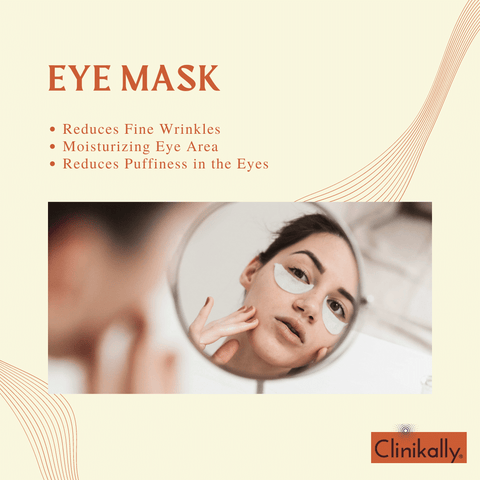
Maintaining a bright, youthful, and refreshed appearance requires nourishing and revitalizing the under-eye skin. The skin in this area is delicate and thin, making it more prone to signs of aging and fatigue. Here are some effective methods for nourishing and revitalizing under-eye skin:
-
Hydrating Eye Creams: Look for eye creams that are specifically designed for the under-eye area. Choose products that contain hydrating ingredients like hyaluronic acid, glycerin, or ceramides to replenish moisture and improve skin elasticity.
-
Antioxidant-Rich Products: Use antioxidant-rich eye creams or serums, such as vitamin C, vitamin E, or green tea extract. Antioxidants safeguard the skin against free radical damage, which can cause premature aging and dullness.
-
Apply Eye Masks or Patches: Use nourishing and revitalizing eye masks or patches on your under-eye area to provide intense hydration and soothing benefits.
-
Consider Eye Serums: Lightweight and fast-absorbing eye serums can deliver potent active ingredients to target specific concerns, such as dark circles or fine lines.
-
Get Enough Sleep: Ensure you are getting sufficient quality sleep each night to allow your under-eye skin to rejuvenate and repair.
-
Reduce Eye Strain: Take regular breaks from screens and practice the 20-20-20 rule: every 20 minutes, look at something 20 feet away for 20 seconds to reduce eye strain.
-
Avoid Rubbing Your Eyes: Be gentle when applying skincare products or removing makeup in the under-eye area to avoid irritating the delicate skin.
-
Cold Compress: Apply a cold compress or chilled cucumber slices to the under-eye area for a few minutes to reduce puffiness and revitalize tired eyes.
-
Protect from UV Rays: Wear sunglasses and apply sunscreen with at least SPF 30 daily to shield the under-eye area from harmful UV rays.
-
Stay Hydrated: Drink plenty of water throughout the day to maintain overall skin hydration and support under-eye skin health.
-
Consider Gua Sha or Jade Rolling: Gently massaging the under-eye area with a gua sha tool or jade roller can help improve blood circulation and reduce puffiness.
-
Aloe Vera Gel: Apply a small amount of aloe vera gel to the under-eye area for its soothing and revitalizing properties.
-
Camouflage with Concealer: Use a lightweight, hydrating concealer to cover dark circles or discoloration, providing an instant revitalizing effect.
-
Healthy Diet: Consume a balanced diet rich in vitamins, minerals, and omega-3 fatty acids to support skin health.
Providing Essential Nutrients and Antioxidants
Providing your skin with essential nutrients and antioxidants is critical for maintaining its health, vitality, and youthful appearance. Proper nutrition can help protect the skin from damage, support its natural functions, and address a variety of skin issues. Here are some essential nutrients and antioxidants, along with their skin benefits:
-
Vitamin C: An antioxidant that helps protect the skin from free radical damage caused by UV rays and pollution. It also promotes collagen synthesis, brightens the skin, and evens out skin tone.
-
Vitamin E: A powerful antioxidant that works synergistically with vitamin C to protect the skin from oxidative stress. It also helps maintain the skin's moisture balance and soothes inflammation.
-
Vitamin A (Retinol): Known for its ability to stimulate collagen production, increase cell turnover, and reduce the appearance of wrinkles and fine lines.
-
Vitamin B3 (Niacinamide): Helps improve the skin's barrier function, reduce redness, and minimize the appearance of pores. It can also inhibit the transfer of pigment, making it effective for addressing hyperpigmentation.
-
Omega-3 Fatty Acids: Essential fatty acids that support skin hydration, maintain the skin's lipid barrier and reduce inflammation.
-
Coenzyme Q10: An antioxidant that helps protect the skin from free radicals and assists in energy production within skin cells.
-
Green Tea Extract: Rich in polyphenols, green tea extract has potent antioxidant and anti-inflammatory properties, which can protect the skin from damage and soothe irritation.
-
Resveratrol: An antioxidant found in red grapes and berries, resveratrol helps neutralize free radicals and may have anti-aging effects.
-
Probiotics: Beneficial bacteria that can promote a healthy balance of the skin's microbiome, leading to improved skin barrier function and reduced inflammation.
-
Hyaluronic Acid: A humectant that attracts and retains moisture in the skin, keeping it plump, hydrated, and resilient.
-
Zinc: An essential mineral that supports the skin's healing process and has anti-inflammatory properties.
-
Selenium: An antioxidant that works with vitamin E to protect the skin from oxidative damage.
Supporting the Regeneration of Healthy Skin Cells
Maintaining a youthful and beautiful complexion requires promoting the regeneration of healthy skin cells. Achieving total skin health requires healthy skin cell turnover. Exfoliation, moisturization, sun protection, an antioxidant-rich diet, topical antioxidants, retinoids and retinol, peptides, amino acids, hyaluronic acid, gentle skincare, staying hydrated, managing stress, and following a consistent skincare routine are all effective ways to support the regeneration of healthy skin cells. Remember that individual outcomes may vary, so be patient and consistent with your skincare routine. Consider contacting a dermatologist or skincare professional for specialized recommendations if you have specific skin concerns or want personalized assistance.
Combatting Signs of Fatigue and Restoring Radiance
Combating weariness and restoring skin radiance are essential for creating a youthful and revitalized appearance. Fatigue symptoms like dullness, dark circles, and puffiness can cause the skin to appear worn and aged. Getting enough sleep, hydration, hyaluronic acid, vitamin C, an antioxidant-rich diet, facial massage, cold compresses, caffeine eye creams, exfoliation, brightening serums, sun protection, restorative masks, reducing eye strain, stress management, and consistent skincare routine are some effective strategies to combat signs of fatigue and restore radiance to the skin. You can counteract indications of exhaustion, restore radiance to the skin, and attain a more revitalized and vibrant complexion by adopting these tactics into your daily regimen. If you have specific skin concerns or want personalized advice, consult a dermatologist or skincare professional for tailored recommendations.
Tailoring Hyaluronic Acid Serum to Your Skincare Routine
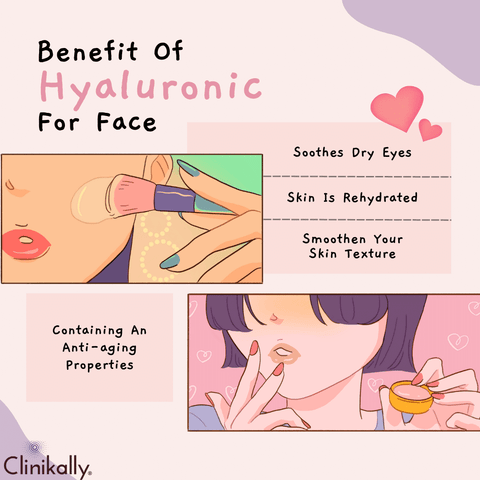
Incorporating a hyaluronic acid serum into your skincare routine can provide numerous benefits to your skin, including hydration, plumping, and a smoother complexion. Here's how to customize a hyaluronic acid serum for your particular skincare routine:
-
Choose the Right Hyaluronic Acid Serum: There are various hyaluronic acid serums available with different formulations. Look for a serum that is appropriate for your skin type (e.g., oily, dry, sensitive) and any specific concerns you want to address (e.g., fine lines, dullness).
-
Cleanse Your Skin: Start with a gentle cleanser to remove dirt, oil, and makeup from your face. A clean canvas makes it easier for the hyaluronic acid serum to penetrate.
-
Tone (Optional): If you use a toner in your routine, apply it after cleansing. A toner can help balance your skin's pH and prepare it for better product absorption.
-
Apply Hyaluronic Acid Serum: Take a few drops of the hyaluronic acid serum and apply it to your face and neck. Gently massage it into your skin using upward motions.
-
Consider Layering: Hyaluronic acid is a water-based product, so it can be layered with other products easily. Apply any other serums or treatments after the hyaluronic acid serum. Apply the general rule of layering products from thinnest to thickest consistency.
-
Lock in Hydration with Moisturizer: After the hyaluronic acid serum, apply a moisturizer to lock in the hydration and further nourish your skin. Choose a moisturizer that is appropriate for your skin type and concerns.
-
Sunscreen (Morning Routine): If you're using the hyaluronic acid serum in your morning routine, always follow it up with sunscreen. Sunscreen protects your skin from harmful UV rays and helps maintain the benefits of the serum.
-
Use as Needed: Depending on your skin's hydration needs, you can use the hyaluronic acid serum once or twice daily. Some people prefer using it in both their morning and evening routines, while others find that once a day is sufficient.
-
Adjust Frequency: If you experience any irritation or sensitivity, consider reducing the frequency of using the hyaluronic acid serum or using it on alternate days.
-
Patch Test: Before incorporating a new product into your routine, perform a patch test on a small area of your skin to check for any adverse reactions.
-
Stay Consistent: For best results, be consistent with your skincare routine. The effects of hyaluronic acid may take time to show, so patience is key.
Compatible Formulation and Usage with Other Eye Care Products
When introducing a hyaluronic acid serum into your skincare routine, be sure it's compatible with other eye care products to maximize efficacy and minimize discomfort. Patch tests, separate eye serums, and products that hydrate the eye area indirectly, soft eye creams, layering order, day and night routine, avoid overloading the skin, frequency, and ceasing if irritation arises are some guidelines for utilizing a hyaluronic acid serum with other eye care products. For proper usage, always read the product labels and follow the manufacturer's directions. Consider visiting a physician or skincare professional for personalized assistance if you have specific concerns or need advice on how to include a hyaluronic acid serum into your eye care routine.
Incorporating Hyaluronic Acid
Incorporating hyaluronic acid into your skincare routine can provide hydration, plumpness, and general skin health benefits. Cleaning, toning (optional), hyaluronic acid serum application, considering damp skin, layering with other serums (optional), eye area application (optional), moisturizer, sunscreen (morning routine), frequency, consistency, adjustment as needed, and use in combination are the steps to effectively using hyaluronic acid in your routine. Keep in mind that hyaluronic acid is appropriate for all skin types, including dry, oily, sensitive, and acne-prone skin. If you have specific skin concerns or are unclear about how to add hyaluronic acid to your routine, seek personalized advice from a dermatologist or skincare specialist.



